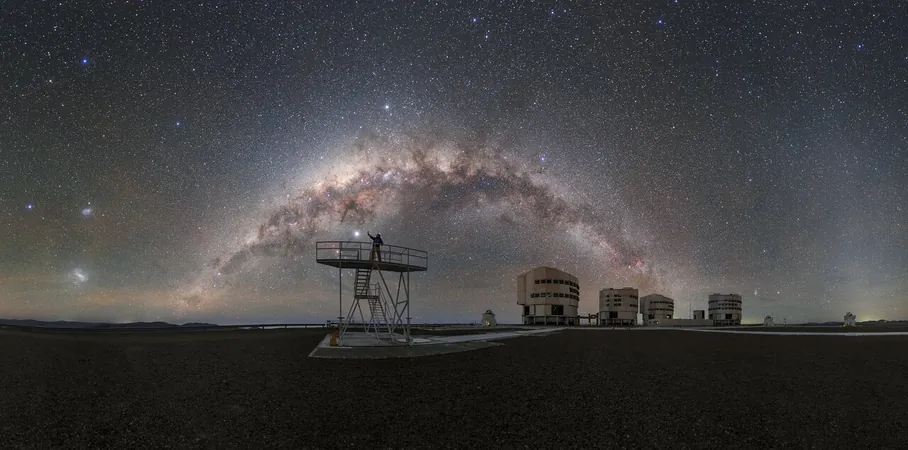
Industrial Megaproject Poses Threat to World's Premier Astronomical Observatories
2025-01-10
Author: John Tan
Introduction
Astronomers are facing a new wave of challenges as they strive to preserve the unparalleled clarity of the night sky essential for their research. One prominent issue stems from satellite mega-constellations like Starlink, which, while promising global high-speed internet connectivity, wreak havoc on sensitive telescope observations due to their bright reflections and rapid movement. However, a more localized threat has emerged near the European Southern Observatory's (ESO) Paranal telescope in Chile, which is now at risk from a significant industrial development.
The Threat from AES Andes
The ESO has formally urged the Chilean government to reconsider plans for a massive industrial complex proposed by AES Andes, a subsidiary of the American AES Corporation. Spanning approximately 3,000 hectares, this site would host hydrogen and ammonia production facilities, along with electricity generation units—and crucially, extensive lighting systems.
Impact of Light Pollution
Light pollution poses a substantial risk to astronomers, as the Paranal telescope is renowned for its minimally disturbed observational environment. Research has shown that even slight increases in light pollution can drastically impair the telescope's functionality. With Paranal having made groundbreaking contributions to astronomy—most notably its role in the Nobel Prize-winning research on the supermassive black hole Sgr A*—the stakes couldn't be higher.
Chile's Astronomical Advantage
Chile is often regarded as a goldmine for astronomical research, boasting some of the least light-polluted skies on the planet. In addition to Paranal, Chile is home to the Armazones and Atacama Observatories, which rank among the world’s top three least affected by artificial light. With four other observatories in the top fifteen globally, the country's status as a leader in astronomical studies is unquestionable.
Future Concerns
Furthermore, Chile's astronomical prowess is set to be enhanced with the construction of the Extremely Large Telescope (ELT) near Paranal, which will stand as the largest telescope of its kind. The potential approval of the AES Andes project raises concerns that any light pollution could impede future investments and advancements in the field.
Current Status and Call to Action
Currently, the AES Andes proposal awaits environmental impact assessment, providing an opportunity for feedback. The ESO has expressed conditional support for the project concept but emphasizes the need for relocation to mitigate any adverse effects on the observatories. As it stands, the future of these critical astronomical sites—and the insights they provide into the universe—hangs in the balance.
Global Implications
This unfolding situation is not merely a local matter; it has ramifications for the global astronomical community. Advocates for science hope to rally support to safeguard these vital resources before it's too late, ensuring that the clear, dark skies of Chile continue to inspire and facilitate groundbreaking discoveries.
 Brasil (PT)
Brasil (PT)
 Canada (EN)
Canada (EN)
 Chile (ES)
Chile (ES)
 Česko (CS)
Česko (CS)
 대한민국 (KO)
대한민국 (KO)
 España (ES)
España (ES)
 France (FR)
France (FR)
 Hong Kong (EN)
Hong Kong (EN)
 Italia (IT)
Italia (IT)
 日本 (JA)
日本 (JA)
 Magyarország (HU)
Magyarország (HU)
 Norge (NO)
Norge (NO)
 Polska (PL)
Polska (PL)
 Schweiz (DE)
Schweiz (DE)
 Singapore (EN)
Singapore (EN)
 Sverige (SV)
Sverige (SV)
 Suomi (FI)
Suomi (FI)
 Türkiye (TR)
Türkiye (TR)
 الإمارات العربية المتحدة (AR)
الإمارات العربية المتحدة (AR)